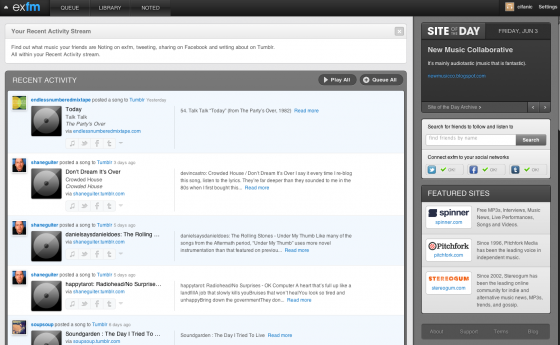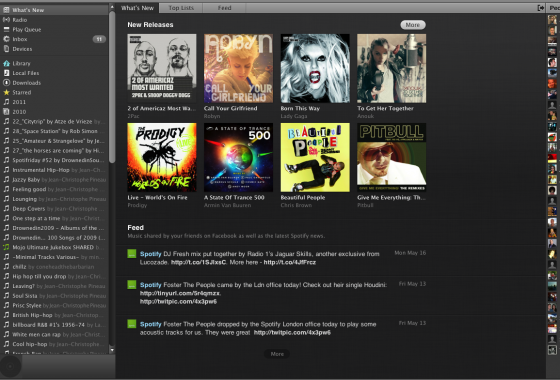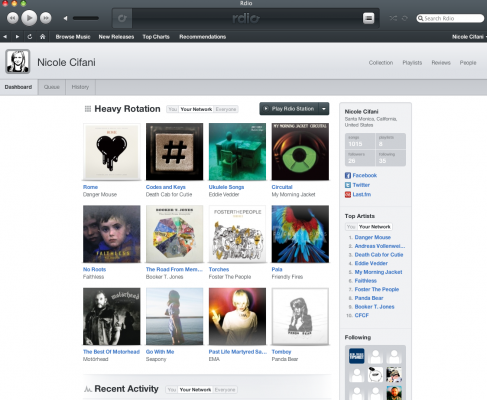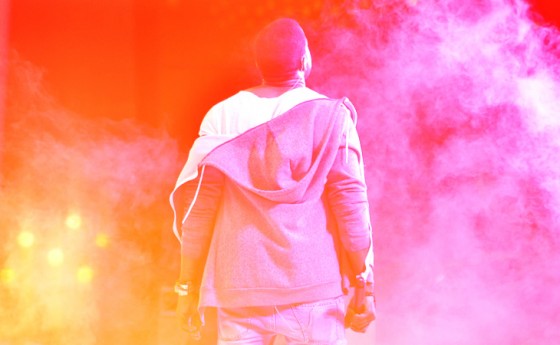The future of facilitating music discovery is giving users the ability to find the right blend of content by delivering it within the the right context – and (this is key here) going to where they are.
As an online radio programmer and DJ, I need to consider ways to better the process of music discovery. A listening experience refers more to the technological aspects of the user interface that includes usability and audio quality. Discovery – how users find music – is a big part of this equation and is the focus of this piece.
So…what the heck is non-linearity?
I constantly think about ways to use digital tools for sharing music with those who friend or follow me. So far, the process is far from linear. Meaning, there is no singular place to go for sharing music with others because music fans are scattered. There are many methods for listening, and countless ways of communicating what it is we’d like to share.
Our habits are also non-linear. We seldom visit the same sites over and over again, let alone in the same order. The way we engage with content creates non-linear paths of engagement and discovery.
Here’s an example of what I mean.
Last night, I was reading a blog post and needed to look up an unfamiliar word. When I Googled the word in another tab, the second entry down was a random article from NY Magazine that just happened to include said word. I went to the NY Magazine site and read the entire article. Then, I clicked over to their fashion section and browsed a few posts before heading back to the original blog I was reading.
Depending on how you look at it, this wayward path can be maddening – or just the we operate.
And if we have something to share, the key is going to where fans may happen to go however wayward the process.

Sharing music can be something as simple as posting a cool music video to Facebook with some context around what makes it great. It can be tracking, charting, and sharing plays in Last.fm, or creating a deep playlist on a streaming service that’s left to discovery. It can also be favoriting a track to a social discovery site like blip.fm, like.fm, or ex.fm.
The key here is working all the spokes to go where your users are. It’s no longer acceptable to rely on the one-way method of communication that traditional media provides.
Streaming Music Services
Streaming full catalogs of music is finally becoming accepted by the music industry. A study in traffic research that came out last week reports that the popular television and movie-streaming site Netflix has overtaken illegal file-sharing service BitTorrent. This reveals that the demand for legal, paid-for content is quite high. Copyright-holders need to bless legal streaming services, less they find folks out to pirate their content instead.
This movement seems to be happening whether content providers like it or not. Amazon launched a cloud locker service in early April, allowing users to store and stream music from any device. Amazon chose to launch the product without permission from the major labels. Google has a similar service coming (it’s currently available as a closed beta version), and Apple is expected to launch one soon.
Many other dedicated services exist that place an emphasis on social sharing and discovery, and their catalogs are expanding in leaps and bounds.
Tracks per Service (May 2011)
- Slacker: 8 million
- Rdio: 8.5 million
- MOG: 11 million
- iTunes: 13 million
- Napster: 10 million
- Rhapsody: 10 million
- Grooveshark: 6 million
- Spotify: 13 million

Curating Music Experiences
Spotify is an incredible music service that boasts the largest catalog at 13 million tracks. Perhaps because they’re based in EU, their content is deeper and richer than American-based services who tend to place more of an emphasis on mainstream charts. They’re apparently getting close to agreements with the major labels, with several agreements in place with indie distributors like IODA, Tunecore, and CD Baby.
A big drawback in Spotify is in it’s lack of curation. Rhapsody, while it’s interface leaves much to be desired, does an excellent job of providing recommendations by means of editorial picks and lists to choose from. Spotify has content is in place with discovery primarily generated through user-created playlists, large directories of which can be found both on and off Spotify.
New Music Tuesdays is a weekly playlist featuring – you guessed it – weekly releases newly available to the marketplace. It’s one of the bits of media I can’t wait to explore each week (another is Friday’s music video playlist from Yewknee).
Oftentimes, I’ll know what kind of mood I’m in but need help in finding music to match it. It would be great if some guidance was in place from a trusted musical source. I’d also love a way to discover playlists within the application by mood, style, obscurity, and other criteria. Slacker Radio does a stellar job of doing just that.I use it all the time for streaming radio at home when I’m going for a specific ambiance.

Other services based in the US, like Rdio, connect directly with brands for providing curated listening experiences.
At the annual NARM Convention in Los Angeles last month, I had the opportunity to chat with Marisol Segal, VP of Business Development at Rdio. “We’ve been expanding our catalog,” she says. “Our goal is to have close to 10 million songs in the very near future. We’re also filling in the gaps and focusing in on niche genres…like electronic music, as an example.”
Rdio partners with organizations that already have a strong voice in music, or happen to match up exceedingly well there. “We look for the right match, says Segal. “It’s really on a case by case basis.”
For instance, if you’re a helpless Pitchfork devotee (they tend to provide a veritable kaleidoscope of what’s new and cool) you can check out playlists like Pitchfork’s Top 200 songs of the ‘90’s and the Pitchfork Festival 2011. Likewise, if you dig the vibe that the Fader group has to offer, (they offer a fresh b-side approach to indie rock, hip-hop, and dance), you may love seeing what they’re up to in your timeline.
For the brand, it deepens their media scope and furthers brand awareness outside of the primary medium, whether it be a website or print magazine. Most importantly, it entertains and connects with fans on a highly interactive level. This strengthens the relationship from both sides, allowing the brand to learn more about their audience, while the audience aligns their awareness and trust to the brand.
As a music fan, I love experimenting with all the various streaming sites. And like many folks, I consciously choose not to limit myself to just one. It gives me a better understanding of what works – and gets my internal gears going with possibilities and room for improvement. Plus, it’s fun! I’ve learned that each service is different, and they all come with their own respective lists of pros and cons that ultimately drive the industry forward.
Go There – And Give
Using Spotify and Rdio as examples above, the libraries of legitimate discovery sites are growing.
Labels also need to offer up exclusive recordings, or they’ll always struggle with piracy. Music fans are rabid for it all.
The wild wild west nature of the internet gives us access to the remixes, the white labels, the live bootlegs and pre-releases. Sometimes they even come directly from the source. This is huge in the hip-hop community where rappers are constantly releasing fresh material to further their reach. Kanye did it, Lupe does it, and Rick Ross’ Maybach Music Group was created from it.
The job of any music organization is to now go to where their audience is, instead of the other way around. If your users are on Twitter and Facebook, make sure that engaging there is a cornerstone of your digital, marketing, and communications strategy. Start collecting bits of digital media to share, and hire a copywriter to make your posts fresh and engaging.
Each campaign should have specific goals in mind that are driven by engagement. From closed loop social deals to realtime social optimization, the possibilities are endless once your top influencers are tapped.
Create playlists in places like Spotify, MOG, Rhapsody, Rdio, and Last.fm. Give away free mixtapes and exclusive offers. When you’re working all the angles in a smart and interesting way, it’s hard to be ignored.
Would you be interested in a run-down of all the various streaming sites? How about ways to further engage your audience? Let me know in the comments section below!

Great post… thanks for sharing. I’m still shocked that YouTube has the only recommendation engine that works well for me. Granted, I have obscure tastes in mostly old records, but still!
My problem with streaming services is that they can’t become the next “format” unless they have a complete catalog… which is near impossible with the large number of companies all fighting for the even larger number of licenses required to make it legal. That means each streaming service will have a different incomplete catalog of music to choose from, filtering and limiting a listener’s discoverability and recommendation of music. The last thing we need is more fragmentation.
It is growing as you say in your post, but do you think it can ever reach that critical mass where it takes over mp3 as the next generation format? I’m still not sure streaming qualifies as a format, just posing the question for thought.
Cheers,
Ivan
Comments are closed.